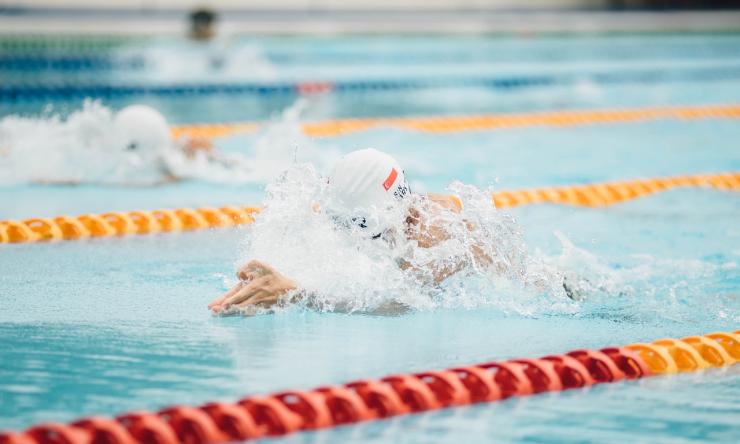Common Olympic injuries
The 2024 Olympic Games are top of mind for people globally. While the athletes make their sports look effortless, their constant overuse of their muscles and tendons can lead to injury. A Baylor College of Medicine orthopedic surgeon details common injuries among fan-favorite Olympic sports.
Basketball
Basketball is high-impact, lower-extremity-related sport often leading to ankle and foot injuries. Ankle sprains occur when ligaments supporting the ankle stretch beyond their limits or tear, typically during sudden changes in direction or improper landings. Achilles ruptures and strains also are common, devastating injuries resulting from explosive movements, such as jumping and quick sprints.
Knee injuries are another major concern, including knee sprains, which involve the stretching or tearing of ligaments within the knee joint. A severe sprain can lead to anterior cruciate ligament (ACL) ruptures or meniscus tears, which often require surgical intervention and extensive rehabilitation. The patella tendon, which connects the kneecap to the shinbone, is crucial for jumping activities. Overuse and repetitive stress from jumping can lead to patellar tendonitis, commonly known as jumper’s knee.
Upper extremities are less common in basketball, but players have a high tendency of finger injuries (sprains or dislocations) due to high velocity and force involved in catching and handling the ball. Shoulder dislocations are rare but remain a potential risk in basketball.
“For these on-court collisions when you’re running high speed down the court, going through a pick or going around other players, you can experience shoulder injuries,” said Dr. Jet Liu, assistant professor in the Joseph Barnhart Department of Orthopedic Surgery at Baylor. “Shoulder dislocations are rare but a potential injury in basketball.”
Swimming
Swimming affects upper extremities, particularly the shoulders. The term “swimmer’s shoulder” encompasses any strain related to the shoulder, rotator cuff, labrum or surrounding muscles.
The rotator cuff is a tendon composed of four different muscles that facilitate shoulder movement in various directions. Repetitive overhead strokes, such as freestyle swimming, often lead to shoulder impingement syndrome. This condition occurs when the shoulder tendon is inflamed and becomes impinged or squeezed between the top of the humoral head and the bottom portion of the clavicle and acromion, resulting in pain, reduced range of motion and chronic shoulder issues if left untreated.
Swimmers frequently experience back issues as it is a full-body sport that requires the core muscles to propel the swimmer through the water. Lower back strain and pain could present potential issues in swimmers due to the repetitive nature of swimming strokes and constant engagement of the core. Overuse of the back and core muscles can lead to muscle imbalances, fatigue and potential injuries. They might also endure knee injuries since they use lower extremity to kick through the water.
“Swimmers use their knees for these frog-kicking motions to move through water to propel forward. This leads to strains in the inner portion of the knee, specifically the medial collateral ligament, as well as excessive compression forces on the outer portion of the knee. We call this breaststroker’s knee,” Liu said.
Gymnastics
Gymnasts endure a variety of injuries due to the intense, physical demands of the sport. Wrist strains, wrist pain and wrist fractures can occur from weight-bearing handstand and cartwheel movements. Wrist protection and proper technique are crucial for injury prevention.
Knee sprains, knee strains and even ligamentous tears (such as an ACL tear) can also result from high-impact landings from jumps, flips and dismounts. These injuries could require extensive rehabilitation or surgical intervention. Ankle injuries also are a common result of landings and dismounts, and sprains can lead to chronic instability of the ligaments if they are chronically injured and stretched.
These athletes might also experience rotator cuff injuries from high-impact landings and repetitive overhead movements from swinging on the bars, possibly requiring prolonged periods of rest and rehabilitation.
“Gymnasts are subjected to tremendous physical demands, and the repetitive nature of their trainings and performances increase the risk of injuries throughout the body,” Liu said. “Proper technique, conditioning and preventive measures are essential to minimize these risks and ensure the longevity of their careers.”
Track and field
Sprinters, runners, jumpers and throwers will experience different injuries in track and field. Runners often have hamstring strains from rapid acceleration and deceleration, as well as shin splints from overuse of light muscles along the shin, leading to inflammation of the tibia. Extreme overuse can cause stress fractures, commonly occurring in the foot or tibia.
“Soft tissue tendons can become inflamed from chronic overuse or repetitive stress, leading to conditions such as Achilles tendonitis or plantar fasciitis,” he said.
Jumpers experience patellar tendonitis (jumper’s knee) due to high-impact landings and takeoffs. Hip flexor strains result from overstretching the muscles at the front of the thigh.
Throwers often have shoulder (rotator cuff) or elbow strains, stemming from repetitive, forceful throwing motions that place significant stress on the arm.
“All injuries can significantly impact athletes’ overall condition in their sport,” Liu said. “It is crucial for athletes to engage in appropriate rehabilitation to maintain peak performance levels.”
Preventing these injuries requires a multifaceted approach. Warming up properly before training and competition is essential to prepare the muscles and joints for physical demands. Stretching helps maintain flexibility and reduces the risk of muscle strains. Icing body parts after competition can help reduce inflammation and aid recovery. Proper nutrition, rest and sleep are also critical components of an athlete's regimen, allowing the body to repair and strengthen itself between training sessions.










